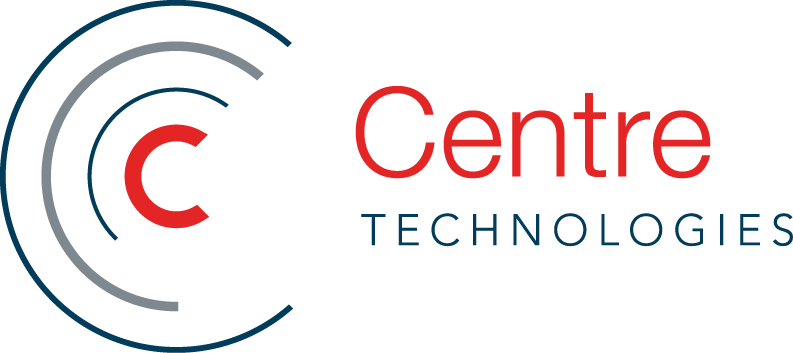Uncovering the Biggest IT Lies: How to Navigate Their Deceptive Promises
Sometimes you can tell - sometimes you're talking to a company you're trying to outsource help to and you start to feel that tingle down your spine or a spark going off in your brain. You're thinking to yourself, this is too good to be true or maybe, this person's lying through their teeth. But you need their help, right? That's why you're talking to them. Perhaps you stay quiet and convince yourself that you're just paranoid or maybe you trust yourself and decide to abandon the effort, only to find out later the person you were wary of was actually telling you the truth. But how can you tell the difference? We're here to give you the insight into lies you might hear from a managed services provider (MSP) and how to deal with them.
Last week, we held our annual Steak Webinar live from 44 Farms, a premier registered Angus operation and a producer of ethically raised, all-natural Black Angus beef. Not only does this event keep in line with our unique style of webinar which pairs customer interests with customer needs, but the topic this year was a little different as well.
We decided to showcase the ugly side of the IT industry - exposing the lies you might be hearing from other sales reps, advertisements, or leadership outside the Centre walls. And if you're on the hunt for a new MSP, we touched on things that we would recommend you look out for. Here are 4 of the biggest lies you might hear and how to handle them. Bonus content: highlights from our Steak Webinar live from 44 Farms following each lie!
4 Biggest Lies Told by IT Companies
...and how to handle them. If you're hearing any person from a third-party managed services provider (MSP) or IT company saying one of these, odds are they're telling you a lie.
#1: They're Offering Lots of Free Things
You know this. If it sounds too good to be true, it's usually too good to be true. From our experience, these statements are often made by smaller MSPs or IT providers. The goal is to get their foot in the door and then upcharge you later in the game. The catch is that their bandwidth is probably smaller and therefore your services will be slower, including ticket response times. Besides, this model is highly unsustainable. Eventually, due to labor costs and other expenses, they're going to charge you something for that service.
If you hear someone offer this up to you, use your best judgement. There's nothing wrong with wanting to take advantage of free things. If you have the time, you can always switch to a different provider later. But you're taking a risk - what if their cybersecurity patching is behind? What if you go offline and you need access to your data now? Our recommendation would be to ask them to either nail down their guaranteed response times and how many dedicated people they have for your specific needs. If you're not happy with their answers, move on. Paying more money for better and more secure services will always be better than saving a buck on spotty support.
#2: One Stop Shop for Everything IT
Outsourcing, just as much as insourcing, requires a team. Like any team, even we have partners that help us accomplish our goals so we can help you meet yours. It's impossible for anyone to be your one stop shop. We may have experts in Dynamics 365 Business Central, but our experts may not be able to support your specific ERP requirements like you can or need. We want to be your IT team, but we're also happy to be an extension of your team. The goal of any IT provider should always be to meet your needs, not bait and switch you to meet a quota.
If someone promises you a one size fits all plan that meets all of your needs, we recommend being intentional and specific about the resources they have. First and foremost, take stock of your own company. What are your primary tasks, concerns, and needs? Once those are listed out, identify the biggest gaps you see in your team. This is what your outsourcing company should fill. Ask them about how many dedicated team members they're giving to your needs, how each solution they offer will specifically solve your problems, and a detailed game plan for how the people and processes guarantee to meet all of their needs without consulting another IT provider.
#3: "We Can Do It Better Than You Can"
You know your business the best. Period. No IT company should try to tell you otherwise. The goal of a partnership is to build relationships that you trust to help you fill the gaps in your strategy. It shouldn't be an IT provider telling you how to run your business.
You may not be an IT wizard, and that's perfectly fine. That's a gap in your team that an outsourced company can fill. But that company should never step in from the outside, see how you uniquely use a product, and then tout they do it better than you.
"Our industry is an industry of IT people. So we all think we can do it better than somebody else. The reality is there are things that we do all the time that you don't do, and there's things you do all the time that we don't do."
James Shuler
Webinar Host & Director of Business Development at Centre
Events like cloud migrations or acquisitions usually only happen once for a business, however, we see a lot of them across our customer-base. So when these events happen, it's imperative that your outsourced third-party IT provider has a grasp on how those things are done and support your business, not step in and try to run it.
If this ever happens, a leadership conversation needs to happen. Establish roles, expectations, and what you need from that provider. If they don't want to adhere to those guidelines, ditch 'em and come see us. That simple.
# 4: Promises of Enterprise-Grade Security on a Small Business Budget
Now, this isn't to say you can't get quality security tools on a small business budget. There can be a truth to the statement. IT providers like Centre bring enterprise-grade tools and processes to the small businesses that haven't matured to that yet. That's valid.
At this point, the lie often categorizes an MSP into two categories based on what they do next. There are enterprise level companies who choose to support customers who are specifically in the small to medium-size business space (like we do) and there's a mom and pop shop ("Chuck in a Truck" as we call them). It is the Chuck in the Truck style IT providers which causes this to be a lie. The owner of that provider probably worked for a managed services provider (MSP) at one point in time and decided they could "do it better" (see above). This 2-3 person company then started supporting customers on what they call an "enterprise level."
For a while it probably works. But without enterprise level processes to back up the enterprise tools they're selling, the tools become worthless because they don't have the bandwidth to support it fully. "It's not the tool always," James Shuler reiterated at our Steak Webinar. "It's the practice, the standard, the discipline to that process. And the small guy can't live up to that. Not consistently."
We recommend starting there - evaluate your business processes before going after the shiny new tool. It's worth it in the long run as a smaller business with the goal of growing and maturing.
When your MSP or IT provider says they can give you more for less, run. Plain and simple. They're lying and that lie will not sustain or support your business. Run for the hills and don't look back. While you're running, through, give us a call. Unlike the Chuck in a Truck (Dan in a Van, Mike on a Bike, etc.) we have the disciplines to back up the tools. And we will work for support your business however you need us to.
what to do next
Regardless of your industry, someone has probably lied to you at one time or another, promising things that never came to fruition. Not only is this frustrating but when it comes to IT, it can put you at risk of cyber threats, data loss, and failing ERP solutions. Even more frustrating is the resulting lack of trust that is difficult to rebuild with another company.
We want to save you that hassle. Contact us today if you're current IT provider is saying any combination of the above lies or maybe you're just not happy with the response time and promises not listed above. We want to be your dedicated IT team or an extension of your current team. Whatever you need, we're here to fill in the gaps.
If you missed our Steak Webinar (and free steaks from 44 Farms!), don't worry! We're committed to delivering educational topics as it relates to industry trends and IT services. Our next event will be held in-person in both Houston and Dallas for a Twisters movie premiere screening and a presentation on how Backup and Disaster Recovery is foundational to your data and infrastructure.
Check out our events page, follow us on LinkedIn, and subscribe to the blog to stay up to date on all things happening at Centre.
Be a thought leader and share:
About the Author
Creative content writer and producer for Centre Technologies. I joined Centre after 5 years in Education where I fostered my great love for making learning easier for everyone. While my background may not be in IT, I am driven to engage with others and build lasting relationships on multiple fronts. My greatest passions are helping and showing others that with commitment and a little spark, you can understand foundational concepts and grasp complex ideas no matter their application (because I get to do it every day!). I am a lifelong learner with a genuine zeal to educate, inspire, and motivate all I engage with. I value transparency and community so lean in with me—it’s a good day to start learning something new! Learn more about Emily Kirk »


 Emily Kirk
Emily Kirk